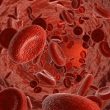After 2 years, SOLACI returns to Bolivia to continue promoting the development of interventional cardiology in Latin America. Do not hesitate to participate in this important event that will undoubtedly be enriching for medical practice and, also, to improve the quality of life of patients in our region. Are you planning on participating in the...
PCI and Anticoagulation: What is the best strategy?
Most patients with atrial fibrillation require anticoagulation to reduce the risk of stroke or systemic embolization. Today, this is achieved with the new direct oral anticoagulants, which present lower intracranial bleeding risk compared against the old vitamin K antagonists. On the other hand, approximately between 5% to 10% of patients receiving PCI also present atrial...
SOLACI-SBHCI 2019 Congress | International Joint Sessions
Prestigious Scientific Societies from all over the world will attend the Congress to discuss the latest advances in interventional cardiology. Discover the International Joint Sessions 01/08 | Paulista Room | 8:30 – 10:00 | Portuguese Society of Cardiology (APIC) Symposium – Acute Coronary Syndrome 8:30 – 8:42 – PCI in NSTEMI ACS: how and when...
After Much Toing and Froing, Gastrointestinal Protection Is Back to the Forefront
Several clinical guidelines differ in their recommendation regarding the prescription of proton pump inhibitors to patients being treated with dual antiplatelet therapy after infarction. In 2015, the European Society of Cardiology (ESC) recommended their use in patients with high bleeding risk; however, in the 2017 update that recommendation became general after the assumption that, for...
The Most Read Articles in Interventional Cardiology in SOLACI
1- What to Do with Blood Pressure Levels Between 130/80 and 139/89 mmHg The decision to be made with a treatment-free patient with systolic blood pressure over 160 mmHg or diastolic blood pressure over 100 mmHg is an easy one. All guidelines agree: treatment should be started immediately alongside lifestyle changes. Read also HERE 2- Low-Risk...
Antithrombotic Strategies in Atrial Fibrillation and Angioplasty
What is the most appropriate antithrombotic strategy for a patient with atrial fibrillation and coronary artery disease, particularly when admitted with acute coronary syndrome or undergoing coronary angioplasty? This is a question whose answer is still in the works and that literature is addressing dynamically. Whatever we read yesterday may already be out of date...
Low-Risk TAVR Trending in All Papers
Transcatheter aortic valve replacement (TAVR) in low-risk patients with symptomatic severe aortic stenosis appears to be safe at one year. In a follow-up using computerized tomography (TC), hypoattenuated leaflet thickening was observed in a minority of patients, but it did not have a long-term hemodynamic impact. It should be noted that the management strategy for...
EuroPCR 2019 | BASKET-SMALL 2: Drug-Coated Balloons vs. DES in Small Vessels
This angiographic substudy supports the safety of drug-coated balloons in small vessels. Despite better angiographic outcomes, there were eight cases of stent thrombosis among drug-eluting stent (DES) patients, while there was none with drug-coated balloons. In patients with small vessels, using a drug-coated balloon appears safe and comparable to DES, with favorable angiographic outcomes at...
The Most Read Articles of March in Interventional Cardiology
1- What to Do with Blood Pressure Levels Between 130/80 and 139/89 mmHg The decision to be made with a treatment-free patient with systolic blood pressure over 160 mmHg or diastolic blood pressure over 100 mmHg is an easy one. All guidelines agree: treatment should be started immediately alongside lifestyle changes. Read more 2-...
Paladin: New Carotid Protection System with Good Results
Courtesy of Dr. Carlos Fava. Carotid artery stenting (CAS) with a cerebral protection system has emerged as an alternative to surgery, particularly for patients with high surgical risk. Nowadays, there are a considerable number of cerebral protection systems, but these may sometimes fail due to anatomical issues, the diameter of embolized particles, or placement difficulties (among...








